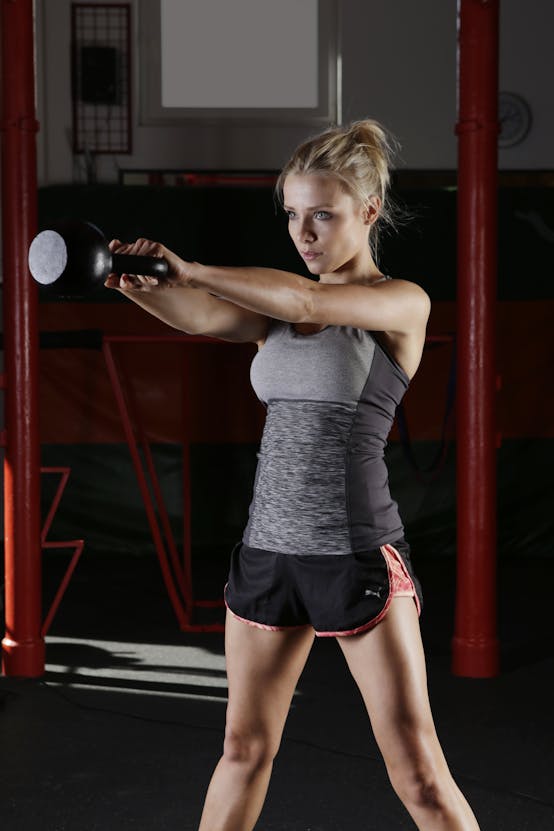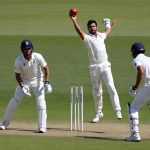Importance of Preventing Shoulder Injuries
In cricket, shoulder injury prevention is crucial, especially for bowlers who heavily rely on the shoulder’s functionality and strength. Common shoulder injuries in cricket include rotator cuff tears, impingement syndrome, and labral tears. These injuries primarily occur due to repetitive stress and overuse, which can escalate without proper precautions.
Cricket bowler safety is significantly impacted by shoulder injuries. Such injuries can severely affect bowlers’ ability to perform, reducing their speed, accuracy, and overall contribution to the team. Furthermore, they can lead to extended periods away from the game, impacting a player’s career longevity and progression.
This might interest you : Unlocking Optimal Muscle Recovery: Essential Nutrition Strategies for Weightlifters
Awareness of the risks associated with shoulder injuries is vital in maintaining the safety and performance of cricket bowlers. Implementing proactive prevention strategies is essential. These strategies may involve tailored exercise programs to strengthen and condition the shoulder muscles and regular rest periods to prevent overuse. Additionally, proper coaching on bowling techniques can significantly reduce the risk of injury.
By focusing on injury awareness, players and coaches alike can take essential steps toward preserving the health and careers of bowlers. With deliberate and informed practices, the incidence of debilitating shoulder injuries can be minimized, ensuring the longevity and success of cricket players.
Topic to read : Key Considerations for Selecting the Perfect Shoes for Competitive Rock Climbing
Proper Warm-Up Techniques
Ensuring adequate warm-up routines is crucial for enhancing performance and preventing injuries, especially when preparing for a match. These routines should involve exercises specifically targeting shoulder mobility, as this area is vital for optimum performance in many athletic disciplines.
Dynamic stretching plays a key role in pre-match preparation, offering the dual benefit of increasing flexibility and stimulating the muscles without the limitations that static stretches might impose. When done effectively, dynamic stretches can enhance blood flow and prime the muscles for upcoming exertions.
To incorporate these practices seamlessly into your sessions:
- Select exercises that focus on both the upper and lower body, ensuring a well-rounded routine that prepares the entire body for action.
- Prioritise movements that mimic the actions you’ll be performing, such as arm circles or cross-body swings, to directly enhance shoulder mobility.
- Allocate a consistent time within your practice for these warm-ups. Embedding them into your sessions regularly can reinforce the habit and further reduce injury risk.
Such a warm-up not only prepares you physically but also mentally, setting the stage for a focused and dynamic performance.
Cool-Down Strategies
When it comes to post-match recovery, cool-down exercises play a crucial role in both maintaining physical health and boosting performance. Stretching routines help reduce muscle stiffness and soreness, which can aid significantly in injury prevention.
One effective stretching routine focuses on shoulder relief. For tennis players or athletes frequently using their upper body, it’s beneficial to perform dynamic stretches like arm circles or static stretches such as the cross-body shoulder stretch. These techniques help improve flexibility and reduce post-match tension.
Hydration also remains a cornerstone of effective post-match recovery. After an intense match, replenishing fluids is essential for maintaining optimal bodily function. Water aids in temperature regulation, nutrient transportation, and joint lubrication—all vital for recovery and injury prevention. Proper hydration can even enhance your stretching routines due to increased muscle elasticity.
In summary, adopting a variety of cool-down techniques ensures comprehensive recovery. Practicing consistent stretching routines and maintaining hydration contribute not just to immediate physical relief, but also long-term health and performance, offering a holistic approach to injury prevention.
Strength and Conditioning Exercises
Strength and conditioning are crucial for athletes, especially in sports like cricket where injury resilience is essential. The shoulder is a vital joint for bowlers, requiring intentional shoulder strength exercises to maintain stability and prevent injury.
Key strength exercises include overhead presses, lateral raises, and rotator cuff workouts. When executed regularly, they target and fortify the muscles surrounding the shoulder joint, ensuring the stability needed for high-performance bowling.
Incorporating resistance training is particularly beneficial for bowlers aiming to enhance their conditioning training. Not only does this kind of training improve muscular endurance and power, but it also supports biomechanical efficiency during the sport. This means better performance with reduced risk of injuries such as rotator cuff tears or shoulder impingements, common among cricket players.
Specific conditioning drills that cater to cricket’s demands are equally important. Plank variations, resistance band exercises, and plyometric training are recommended to amplify overall injury resilience. These exercises condition the shoulder muscles to handle repetitive motions while sustaining the body’s agility and balance.
By integrating these exercises into a regular fitness regime, bowlers can expect improved performance on the pitch and a robust defense against potential injuries. Stability and strength are your allies in the game of cricket.
Proper Bowling Techniques
Understanding bowling form is essential for performance and injury prevention. Correct biomechanics not only enhance your game but also ensure long-term well-being.
One critical aspect of bowling form is maintaining alignment. Your posture should facilitate natural arm and shoulder movement, minimizing strain. Improper alignment can place undue stress on your shoulder, a common cause of injuries in bowlers. Observe your footwork; it significantly affects your form. Feet should smoothly glide, maintaining balance throughout the delivery.
A common mistake in technique that often leads to shoulder problems is overextending the arm. It’s vital to keep the biomechanics natural, without forcing the motion beyond comfort. The follow-through should be smooth, with your hand finishing at shoulder height for optimal control.
Expert tips for improving your bowling mechanics focus on consistency and muscle memory. Regular practice of a proper technique reinforces good habits, reducing the risk of injury. A structured warm-up routine, emphasizing shoulder and core strengthening exercises, is equally crucial. Strengthened support muscles offer improved control and power without compromising form. Monitoring body signals is key; if you experience discomfort, consult with a professional to adjust your technique accordingly. By focusing on form and consistency, bowlers can enhance their performance safely and enjoyably.
Rest and Recovery Methods
Bowling, like any other sport, requires effective recovery strategies to maintain peak performance. Incorporating rest days into your bowling schedule is crucial. They give your muscles the time needed to repair and strengthen, thereby reducing the risk of injury. Without proper rest, muscles become fatigued and less effective, potentially leading to prolonged downtime from injuries.
Active recovery techniques are essential to enhance overall performance. Activities like gentle yoga or swimming can promote blood flow without placing additional strain on the body. These techniques focus on low-intensity exercises to keep muscles engaged while aiding in the healing process. Effective injury management through suitable activities helps maintain flexibility and improve circulation.
Sleep plays a pivotal role in muscle recovery and injury prevention. During sleep, the body produces essential hormones that repair tissues and build muscles. Ensuring adequate sleep helps athletes recover faster and improves concentration on performance days. Prioritising sleep can enhance coordination and mental sharpness, reducing the likelihood of errors that can cause injuries.
Identifying the best rest techniques, such as proper sleep patterns and active recovery activities, will support ongoing improvement and keep you in the game. When you acknowledge the importance of balancing training with rest, you can optimise your performance effectively.
Recognizing Signs of Shoulder Injury
Understanding the injury symptoms for bowlers can greatly enhance early detection and prevention of severe shoulder issues. Common symptoms include persistent pain, reduced range of motion, and an unusual clicking or popping sound during movement. These discomforts might seem minor initially but are clear warning signs that shouldn’t be ignored.
Recognizing these signs early can be a game changer. Early detection helps prevent the worsening of shoulder injuries, reducing the risk of long-term damage and maintaining a bowler’s performance level. Identifying symptoms promptly can lead to quicker recovery times, minimizing disruption to training or competitive schedules.
It’s crucial to know when to seek professional medical advice. If shoulder pain persists beyond a few days, or if signs like swelling, inflammation, or bruising appear, it’s time to consult a healthcare provider. Professional evaluation is important, not only to assess the extent of the injury, but to develop an appropriate treatment plan tailored to the individual needs and activity levels of the bowler.
Being vigilant to these symptoms helps in fostering a proactive approach to health, ensuring that shoulder injuries are managed before they escalate into more debilitating conditions.
Expert Insights and Testimonials
When it comes to maintaining shoulder health, especially for bowlers, expert advice from physiotherapists is invaluable. These professionals emphasize the importance of regular conditioning and proper technique. They suggest incorporating targeted shoulder exercises, which enhance mobility and strength, reducing the likelihood of injury during matches. Among the top injury prevention tips is the significance of a proper warm-up routine that includes dynamic stretches focusing on shoulder rotations.
Testimonials from experienced bowlers who have successfully prevented injuries underscore these insights. Many highlight their commitment to consistent practice of these techniques, which shield them from common shoulder injuries. They often stress the role of listening to one’s body and not overexerting, even during competitive matches, as a key strategy.
Bowler experiences also suggest diverse strategies to maintain shoulder health. Some bowlers utilize yoga or Pilates to improve flexibility, while others prefer swimming or other low-impact exercises to complement their training. The consensus among these athletes is clear: integrating a varied exercise regimen into their routine is crucial for sustaining longevity in their sport.
In conclusion, the blend of expert insights and personal testimonials offers a comprehensive guide for bowlers aiming to keep their shoulders injury-free while optimizing performance.













